
Capoeira is an Brazilian martial art and game that includes elements of dance, acrobatics, music and spirituality.

The berimbau is a traditional Angolan musical bow that is commonly used in Brazil. It is also known as sekitulege among the Baganda and Busoga.
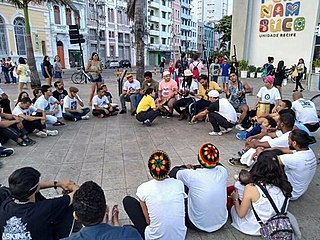
Capoeira de Angola or simply angola is the traditional style of capoeira, the Afro-Brazilian martial art. A newer style, based on the reform of capoeira Angola, is called regional.

Cabeçada is a headbutt in capoeira. It is a commonly used strike and one of the fundamental techniques in traditional capoeira.
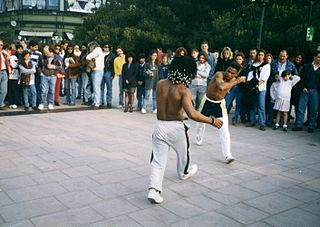
The ginga is the fundamental footwork of capoeira. It is a sidestep that can be a prance or a shuffle and it sets the rhythm of the game. The ginga embodies the extraordinary cunning of capoeira, which is its fundamental characteristic.
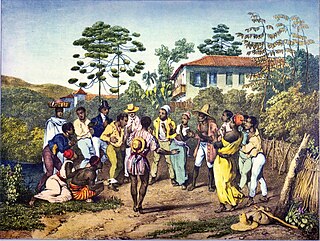
Batuque (drumming) was a general term for various Afro-Brazilian practices in the 19th century, including music, dance, combat game and religion.
N'golo is a traditional Bantu martial art and game from Angola, that combines elements of combat and dance, performed in a circle accompanied by music and singing. It is known as the forerunner of capoeira.
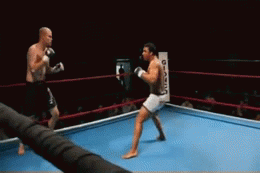
Rabo de arraia or meia-lua de compasso is a distinct technique found in the martial arts of engolo and capoeira, that combines an evasive maneuver with a reverse kick.

The history of capoeira explores the origins and development of capoeira, the Brazilian martial art, that combines elements of dance, acrobatics, and music.
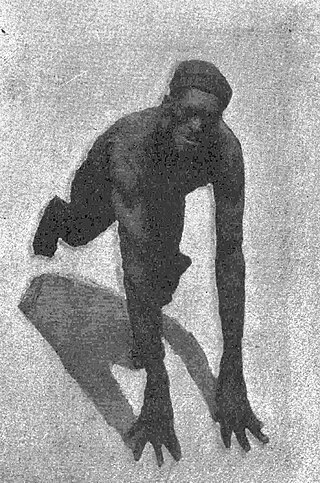
Rabo de arraia is a parent technique in capoeira for inverted kicks over the head, resembling the stingray's strike. This parent term includes following major techniques:
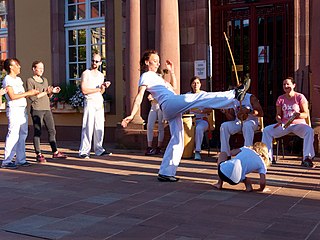
Meia lua (crescent) or Meia lua de frente is one of the few principal kicks in capoeira. The kicking leg moves in the form of an arc before returning to its original position.

In capoeira, escorpião (scorpion), originally known as rabo de arraia, is a distinct inverted kick over the head, resembling the stingray's or scorpion strike.
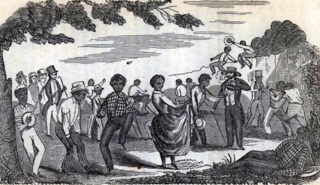
Knocking and kicking is a little-known traditional African-American dance-like martial art, arguably practiced clandestinely in parts of the Southern US and on the Sea Islands.
The Danmyé or Ladja is a martial art from Martinique that is similar to Brazilian capoeira and to other arts in various Caribbean islands.

Capoeira carioca was a street fighting version of capoeira that existed in Rio de Janeiro during the 19th century. In capoeira carioca, all available means were used, including various types of weapons, such as knives, straight razors, clubs and machetes. Capoeira from this period is also known as capoeiragem.

Chapa de frente or bênção (blessing) is a front push kick with the sole of the foot. In some variants, bênção can be done with the heel in the chest.

Rasteira is a foot sweep technique in capoeira, which usually counters high kicks. It is one of the fundamental techniques in traditional capoeira.

Chapa de costas is a back push kick in capoeira, and one of the few principal capoeira's kicks. It is also basic kick in African martial art engolo, the forerunner of capoeira.

Dança de Guerra is a short movie from 1972, directed by Jair Moura.
















